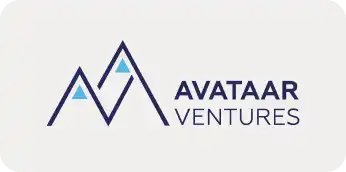(Photo caption: L to R – Netcore Cloud Group CEO Kalpit Jain, Unbxd founders Pavan Sondur and Prashant Kumar, Netcore Cloud CHRO Bhavana Jain and founder Rajesh Jain.)
To build for India first or the US straight away? How do you time your move to the US market? What can you do to survive and thrive in the foray? SaaS founders from India grapple with these questions at one point or the other on their startup journeys.
Netcore Cloud, one of the few SaaS companies to be bootstrapped to $100 million ARR from India, made the foray only in 2019, which was rather late in its 25-year journey. Its founder, Rajesh Jain, candidly admits the company could have grown bigger, and faster if it had gone to the US market a few years earlier.
Why it did not do so comes down to a combination of factors, and there are lessons for other SaaS founders to take away from the Netcore experience.
Partly it was a lack of ambition earlier, says Jain in an interview with SaaSBOOMi. “See, we were growing quite well in India and the emerging markets, so we thought we didn’t have to worry about the US. But the US market, at the end of the day, is much, much larger. I or the CEO should have spent time there earlier.”
Relocate to the US
It’s vital for one of the founders to shift to the US because the setup requires leadership and an entrepreneurial mind. “You can’t hire that easily in the US,” points out Jain. “That also means you need to make sure your India front is well taken care of because 80-90 percent of your team is still here.”
Family commitments made Rajesh Jain a reluctant mover. He had also partially switched off from Netcore when he got deeply involved in other interests, such as strategizing the BJP’s famous digital marketing campaign for the 2014 general election.
Finally, right after Netcore hired a US team in 2019, the Covid pandemic arrived and disrupted travel. “None of us could go there for over a year. We could not do events. And before we got early traction, even the people we had hired left us,” recounts Jain. So the earlier delay in going to the US market proved doubly costly.
That’s the context of Netcore’s second coming in the US market this year with a $100-million acquisition of Unbxd, a Bangalore SaaS company with an established customer base in the US. Its AI-powered personalization product is complementary to Netcore’s full-stack marketing automation.
5x better than the competition
One of the lessons Netcore learned while testing the US waters earlier was the importance of product innovation. “I thought initially that the same product at a cheaper price point could do well. But people are not that interested in the little extra savings,” says Jain. “At the SMB or mid-market enterprise level, they want to see how your product can do things 5x or 10x better than the competition…”
Pricing innovation can help, but product innovation is more important.”
“The US market is 50 to 100 times deeper than in India. So there are lots of companies in each vertical. You need to figure out which vertical you will go deep into, instead of spreading yourself too thin. That means the product-market fit will be different… And finding all this out takes time,” says Jain.
Unbxd’s CEO and co-founder Pavan Sondur moved to the US to drive growth in that market early in the startup’s 12-year journey, while the other co-founder and CTO, Prashant Kumar, remained in Bangalore to take care of the product engineering. It also had enough capital to develop and deploy its personalization engine on ecommerce sites, having raised around $27 million from well-known VC firms like Eight Roads, Inventus Capital, and Nirvana Ventures.
It’s easy to underestimate the amount of capital required to crack the US market. “You need to be able to invest $3-5 million in three years,” says Jain. “One salesperson will cost you $200,000-250,000. So a frontend of four or five people, including sales, marketing, and CSM, will cost you a million dollars straightaway. And that’s not factoring participation in events. Plus, there will be one or two iterations of learning.”
If you hire the wrong person, it will take three months to discover you hired the wrong person, and another three months to replace that person.”
Expenses can thus mount fast in the course of finding the right product-market fit and building the front end in the US market. At the same time, you need a reasonable length of time to get it right. “So you need to make sure there’s sufficient capital available. Otherwise, you’ll come back home like a wounded tiger very quickly,” says Jain.
Sales-led or Product-led?
In Netcore’s case, the push into the US now comes hand-in-hand with Unbxd. Albeit an expensive acquisition, it accelerates the US GTM and growth in preparation for an IPO down the line. And it was financed entirely by Netcore’s own accruals over the years, rather than VC money, underscoring the virtues of being bootstrapped and razor-focused on profitability early on in the startup journey, as detailed in an earlier article.
One constraint of being bootstrapped is that it can be harder to build for the US market from the outset, because of the amount of capital needed for a sales-led model. “If you’re bootstrapped and want to target the US market from an early stage, you need a product that you can sell from India without hiring in the US. Because you can’t hire just one person in the US; you need a team of at least three or four which is expensive. So you need a product-led growth model targeting the SMB market because it may not work so well in the enterprise market,” explains Jain.
It gets trickier in the current recessionary environment with revenue growth rates falling. Jain figures a founder would need a buffer of $10 million in investor capital or sustainable profits which are unlikely to be impacted significantly in the downturn. “If people reduce what they’re spending with you and you already have substantial expenses, it can quickly turn into a negative spiral.”
In sum, the three key lessons for Rajesh Jain from his forays into foreign markets are:
- Top leaders of the company have to relocate and be hands-on with understanding customers, identifying verticals, finding product-market fit, and building a team in the new market.
- Sufficient capital for hiring the right people, fine-tuning the GTM strategy and allowing for downturn effects and iterations.
- Deep product innovation for developed markets like the US, where competitors abound in every vertical, and not just pricing innovation.
These lessons were hard-earned from the multiple pivots Netcore had over the years as well as several mistakes along the way. Jain recalls the first foray outside India into emerging markets like Southeast Asia, where the model was to work with local partners. And that bombed.
“The partners were responsible for selling but had very little skin in the game and did not know our product well either. Within the first few months, if they were not selling the product much, they would not do anything about it. Our people would go there every quarter and meet the partners. Finally, we realized they were just making these foreign trips and nothing was coming out of it,” Jain recalls.
Then Netcore decided to make the upfront investments needed to put some of its own best people in foreign markets. “So, instead of tourism, we made it a destination for people to relocate,” quips Jain.
What it did was that Netcore people were now going out on customer calls, giving a first-hand view of the market. Then it also became more fruitful to work closely with the partners. “That was the big learning which we have now used everywhere else,” says Jain.
Perhaps the biggest takeaway from Rajesh Jain is to never give up. The move to the US was delayed and then disrupted by the pandemic. But, thanks to the cash reserves it built up by always keeping an eye on profitability and sustainability, Netcore could now fast-track the GTM with acquisitions.
Also read Part 1: Navigate the choppy waters ahead with Rajesh Jain of Netcore






























